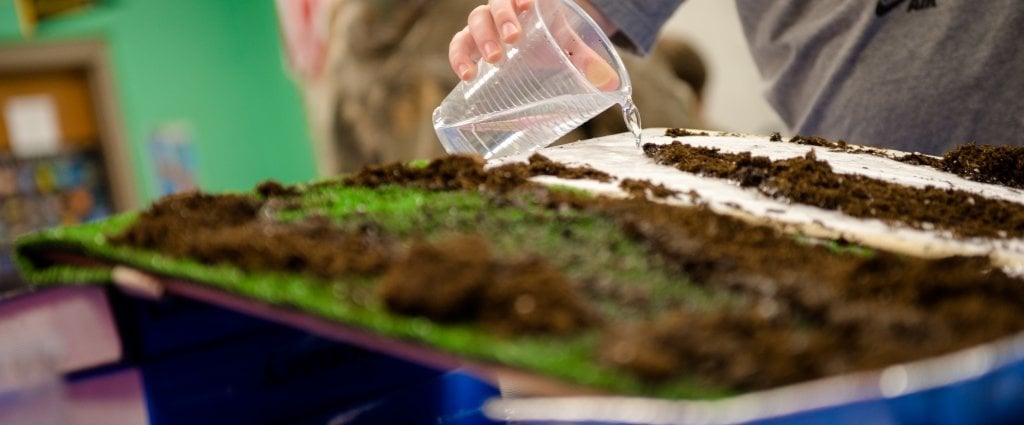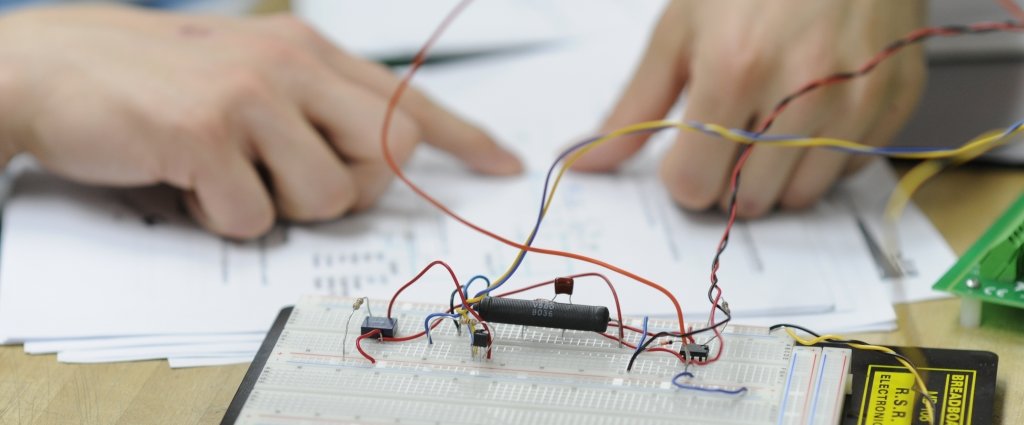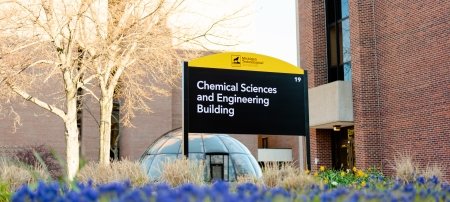From 1,700 middle-school students in 2015 to 45,000 in 2018, the Mi-STAR program brings more Michigan kids and their teachers active ways to apply science and engineering to solve real-life problems.
Mi-STAR, the acronym for Michigan Science Teaching and Assessment Reform, was spearheaded by faculty and staff at Michigan Technological University and launched in 2015 with a $5 million grant from the Herbert H. and Grace A. Dow Foundation. It's been expanding ever since, in cooperation with universities, school districts and educators across the state, increasing from the original 16 teachers in six schools or districts to 450 teachers in 182 schools in 110 districts this year.
In spring 2018, Mi-STAR received $1.9 million in funding from the National Science Foundation. Two individual school districts also garnered additional funding through the State's MiSTEM program, another part of the network of education initiatives designed to teach students the skills they need in a world reliant on science, technology, engineering and math (STEM).
"Michigan Tech scientists and engineers have devoted a lot of time and effort into making Mi-STAR the best it can be—and these efforts are really having a positive impact on Michigan's teachers and students."
Science and Engineering for Everyone
Teachers say the kind of 3D-learning built into the Mi-STAR curriculum levels the playing field and connects students with science and engineering in ways that taking notes and multiple-choice tests can't. Honors students stretch their capabilities; at-risk students can excel.
Students experiment, record and analyze data, and present findings, digging into issues they can relate to that specifically affect life in Michigan. Unit challenges move students through rigorously developed and tested story lines. Like this:
"Your parents want to live off the grid and you don't! You need to create a wind or water generation plan that meets their criteria and convince them why your plan will work."
Or this:
"Your local stream floods each year. It has something to do with changes in land use. The town planning committee wants you to explain why it floods and what they can do about it."
Other challenges, including explaining invasive species issues to State lawmakers and suggesting a management plan or helping your mayor choose the best building materials for a new city center, tackle everyday situations that require science and engineering.
"No one knows the answer; it can't be Googled; it doesn't matter if you've been to museums or have a parent who's a doctor; it doesn't matter if you don't read at grade level or if you're not good at test-taking. We're working to find answers and solutions together and my at-risk kids can problem solve with the best of them," says science teacher Christine Geerer, who's also science department chair at Grosse Pointe School District's Parcells Middle School.
Educators report that the research gets students talking to each other with genuine enthusiasm, and that presenting their findings to the adults who come to hear about the work creates the kind of meaningful dialogue that normally doesn't ensue when students are presenting to their fellow classmates.
Science and Engineering = Life and Career Skills
Michigan Tech has a long history of taking the results of research and making them useful to society—we are good at taking theories and putting them into practice," says Huntoon. "When we started Mi-STAR there was a lot of research about what works in STEM education. We reviewed all of it, reflected on our own experiences as teachers, and put together a model that would work for all types of students."
Mi-STAR is at the forefront of a national movement to show young people how to connect, investigate and draw informed conclusions about how to solve problems, rather than regurgitating memorized information. The project's components are intentionally aligned with Next Generation Science Standards (NGSS). A multi-state consortium focused on cohesive learning for K-12 students across the physical, life, Earth and space sciences, as well as engineering design, NGSS includes Michigan Science Standards put in place to prepare students to apply scientific knowledge to their lives. The standards acknowledge that regardless of what they do for a living, all people benefit from understanding concepts like patterns, cause and effect, how to ask questions, define problems, and engage in argument based on evidence.
There's also no doubt about the need for a workforce adept in science, technology, math and engineering, both for individual prosperity and Michigan's economy. By 2020, one in five jobs in the state will be STEM-related, reports the State of Michigan Bureau of Labor Market and Strategic Initiatives, which also projects that STEM job opportunities will grow by 11.8 percent, outpacing the expected 8.5 increase in other occupations.
Teachers Teaching Teachers

Mi-STAR is as much a resource for educators as for students, moving forward on the premise that the success of any transformational project relies on broad and diverse partnerships. The program collaborates with national and state science and engineering societies, state agencies, education providers and researchers to achieve its vision of integrated science and engineering learning. It's committed to continually expanding the team's knowledge base, as well as to keeping program training and materials affordable—the schools that most need this kind of education program are often the schools that can least afford it. Mi-STAR in late May partnered with an educational supply company, Nasco, to produce and deliver materials kits for students to use with the curriculum.
"Anyone who has been to a high-need school district in Michigan knows that teachers and students around the state are struggling to pay for the resources they need," says Huntoon. "Textbooks are expensive. Supplies are expensive. Teacher training is expensive. We've kept costs in mind the whole time as we developed Mi-STAR so that our products and services could reach the maximum number of people at the lowest possible costs." Funding goes toward retaining key resources, including people and materials, to continuously improve the project.
Other guiding principles: ensure Mi-STAR is both by and for teachers, bringing educators into the thick of program development and nurturing a growing base of Mi-STAR teachers by providing opportunities like the professional learning facilitator training being offered in July. The train-the-trainer approach addresses scalability challenges head-on, by building teacher preparation into the model from the outset.
Huntoon says hearing from the teachers is the most exciting aspect of Mi-STAR's success. "Stories about the impact the program has on their students brings tears to our eyes," she says, explaining that teaching with Mi-STAR can be challenging at first, because teachers have to give up some control in order to put students at the center of the learning process. With more practice, positive change is evident. "Kids who used to sullenly drag themselves into science class are now eager for class to begin. Everyone, including students with special needs, has something to contribute. I think we all understand that the work we are doing is making a difference for the students."

Michigan Technological University is an R1 public research university founded in 1885 in Houghton, and is home to nearly 7,500 students from more than 60 countries around the world. Consistently ranked among the best universities in the country for return on investment, Michigan's flagship technological university offers more than 185 undergraduate and graduate degree programs in science and technology, engineering, computing, forestry, business, health professions, humanities, mathematics, social sciences, and the arts. The rural campus is situated just miles from Lake Superior in Michigan's Upper Peninsula, offering year-round opportunities for outdoor adventure.






Comments